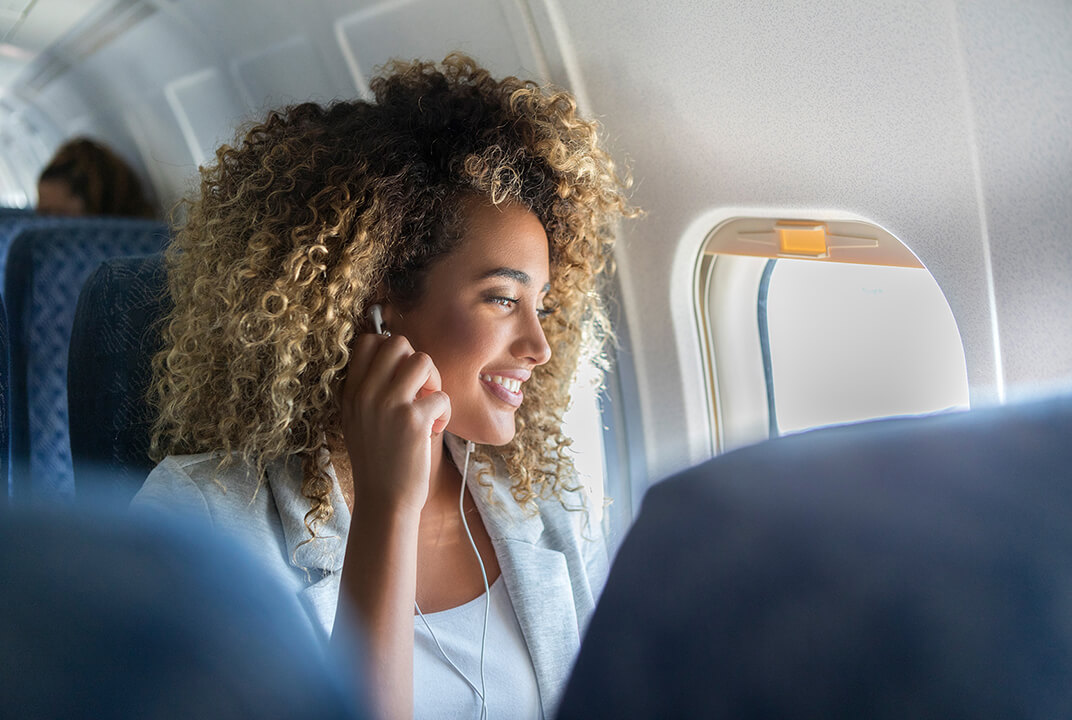Select Language
Asia-Pacific airlines join the connectivity revolution
Inflight connectivity in the APAC region is set to take off – but what new opportunities does this bring for airlines?
When it comes to inflight connectivity, the Asia Pacific region is closer to Europe’s level of 'connectedness' than the more developed North American market. Across Asia, a passenger might encounter connected aircraft occasionally, but it’s rare and when connectivity is available, the quality can vary. However, like Europe, there’s a lot of excitement, early adopters are signing up and passenger interest is growing fast. In the next few years, everything is going to change.
Valour Consultancy, a market intelligence firm, predicts that the number of connected aircraft in the Asia Pacific region – which is the world’s fastest growing aviation market – will rise to 5193 by 2025. In 2015 it was 333. Another report sees the global inflight Wi-Fi market growing at a Compound Annual Growth Rate (CAGR) of 14.9% up until 2021, with APAC experiencing the fastest rate of growth – with a CAGR of 26%.
"The number of connected aircraft in the Asia Pacific region will rise from 333 in 2015 to 5193 by 2025"
So what does this mean for fliers and carriers? Otto Gergye, Inmarsat Aviation’s Vice President of Airline Market Development says, “It’s unlikely to be one size fits all. You might pay (for inflight connectivity) on the budget airlines but have it included in the ticket price on the premium carriers. Or you could have differences between economy and business on the same airline.” Other possibilities include a basic free service for everyone with paid premium services or an ad-supported Spotify-type model. “It will vary from carrier to carrier and depend on how they position themselves,” explains Gergye.
IFC challenges in the APAC region include the expectations of passengers. Those from advanced Asian markets – such as Korea and Japan – are used to ubiquitous high-speed connectivity on the ground, and they expect a similar service in the air. Business passengers, in particular, expect to be able to work for almost the entire flight.
As for leisure users, Gergye says, “social media such as WhatsApp, Snapchat and Instagram probably play a slightly bigger role than they do in Europe.” Indeed, Southeast Asia has some of the highest social media penetration rates in the world. However, the sites favoured by passengers in the region aren’t necessarily the ones the western world is familiar with.
This is most true in China, where Facebook is blocked and the most popular online hangouts include Tencent QQ and Sina Weibo. However, although the Chinese may use different apps, they use them for the same ends. “Content may differ but the amount of time spent and way the Chinese use [online connectivity] is very similar. That’s what’s relevant to us,” says Gergye.
"A challenge for all providers is the regulatory environment"
Australia and New Zealand, although culturally more like Europe or North America, are not that different from Asia in their internet habits, not least because of strong Asian influences.
A challenge for all connectivity providers in the region is the regulatory environment. Unlike in the US and Canada and the EU, there is no single regulatory body. In either of these places you can fly vast distances and be subject to one set of rules. But taking a flight from Brisbane to Bangkok could involve flying over Australian, New Guinean, Indonesian, Malaysian and Thai airspace – each with different regulations and rules. There are huge variations in technological sophistication and their governments operate at different speeds and in different ways.
"IFC has become a hot topic in the Chinese market"
Gergye believes that we’re going to see big changes in the next two to three years. The push will come from two groups. One is fliers. They’re already asking if connectivity is available. Once it becomes available, it will be an important factor in purchasing decisions. This is particularly true of business fliers because connectivity is an easy to justify expense, unlike say, entertainment. The second is the airlines themselves who will be pressuring governments to enable them to offer Wi-Fi inflight.
In China, for example, new legislation to relax the ban on passengers using devices while on board is coming to fruition, making IFC a hot topic for this market.
Several APAC airlines are already out of the starting blocks, including Cathay Pacific, Japan Airlines, Nippon Airways and EVA Air. Singapore Airlines has signed up Inmarsat’s GX Aviation – which solves the problem of the traditional ‘black spots’ of coverage in the region – as has Air New Zealand. Finnair, which has positioned itself as a bridge between Europe and Asia, is using IFC to revive its inflight e-commerce offering, taking it beyond the traditional duty free trolley.
It’s hard to give an exact timeline for developments in Asian connectivity and, of course, there will still be time lag between airlines signing up connectivity and when it's available to passengers because it takes years to fit large fleets. Nonetheless, by the end of 2018, inflight connectivity will be fairly commonplace, although the offering will differ widely. In short, it’s a tremendously exciting time to be involved in APAC connectivity.
“Inmarsat,” concludes Gergye, “is absolutely ready to go. There’s been a quantum shift in the airlines’ thinking and we’re going to see the market boom in the next couple of years.”

